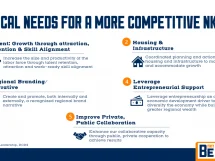Will use money to improve employment and training programs
FRANKFORT, Ky. (June 24, 2014) — Kentucky Education and Workforce Development Cabinet Secretary Tom Zawacki today announced Kentucky has been awarded a $908,285 federal education and workforce grants to expand data collection to improve education and workforce programs. Kentucky is one of six states to receive a grant in the fourth round of the Workforce Data Quality Initiative.
 “These funds will allow us to collect high-quality longitudinal data to improve our employment and training programs for Kentuckians,” said Zawacki. “This information is valuable to workers, employers, students and officials because it can help them make more informed decisions about the future.”
“These funds will allow us to collect high-quality longitudinal data to improve our employment and training programs for Kentuckians,” said Zawacki. “This information is valuable to workers, employers, students and officials because it can help them make more informed decisions about the future.”
A total of nearly $6 million in education and workforce grants were awarded to Kentucky, Connecticut, Indiana, Mississippi, Nebraska and New Jersey.
“The Workforce Data Quality Initiative grant will help Kentucky expand the state longitudinal data system to include all of the major workforce programs,” said Charles McGrew, executive director of the Kentucky Center for Education and Workforce Statistics. “We will be one of very few states that are able to measure program and policy effectiveness across the entire education, workforce and employment spectrum. This will help Kentucky better coordinate our education, training, and workforce systems to improve lives throughout the state.”
According to DOL, grantees will be expected to achieve multiple goals during the three-year grant period. These include:
- developing or improving state workforce longitudinal data systems with individual-level information;
- enabling workforce data to be matched with education data to create longitudinal data systems;
- improving the quality and breadth of the data in the workforce data systems;
- using longitudinal data to provide useful information about program operations;
- analyzing the performance of education and employment training programs; and
- providing user-friendly information to consumers, in the form of scorecards or integrated digital platforms, to help them select the training and education programs that best suit their needs.




















Add Comment